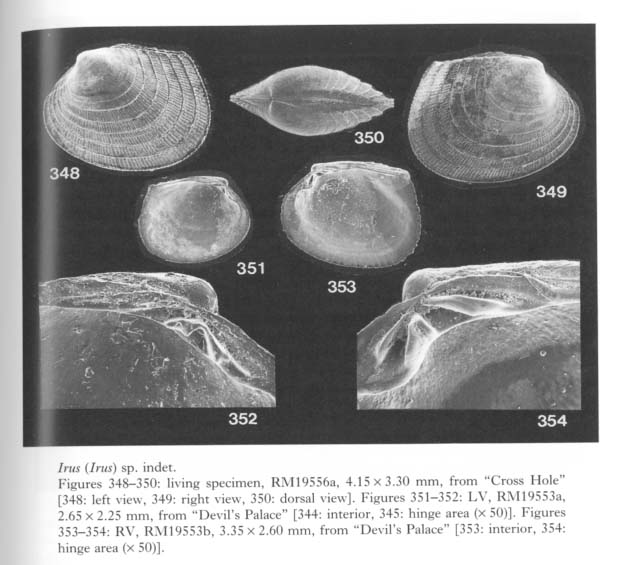Subgenus Irus Schmidt, 1818
Irus (Irus) sp. indet.
Figures 348-354

Several specimens were found alive on the bottom sediments of "Lunch Hole" (RM19555) and "Cross Hole" (RM19556) of Irabu Islet, Miyako Islands. Dead specimens were also found from "Devil's Palace" (RM19553), and "Fool's Palace"(RM19554) of Shimoji Islet.
The shell is subquadrate and regular in shape, very small, about 4 mm in length, white or light brownish, strongly inflated, about 1.3 times longer than high, having widely spaced, narrow but highly raised commarginal lamellae, the intervals of which are marked with numerous radial riblets. Lunule is wide but weakly delimited. Posterior area is obtusely truncated. Hinge typical of veneroid, consisting of three cardinal teeth and a pair of lateral teeth in each valve with long external ligament. Pd I is small, and Pd II is clearly demarcated.
The present species resembles the juvenile stage of Irus (Irus) macrophyllus (Deshayes, 1854) and some other species of this subgenus in the surface ornamentation. No specimen larger than 5 mm, however, has been found in the cave sediments. One possibility is that the present material represents a stunted paedomorphic species adapted to such a cavernicolous environment. Similarly, small specimens of the same species occur in the bottom sediments of "Balicasag Cave" of Bohol, the Philippines.